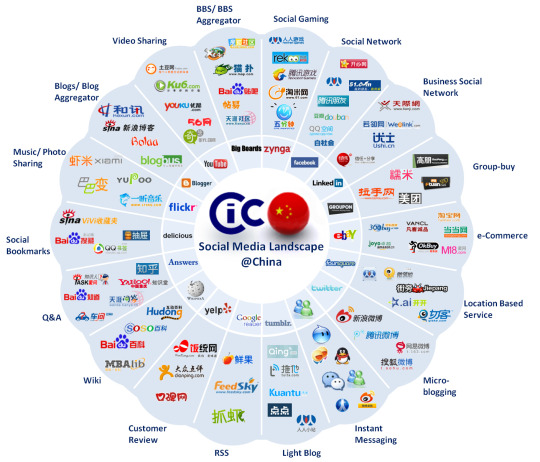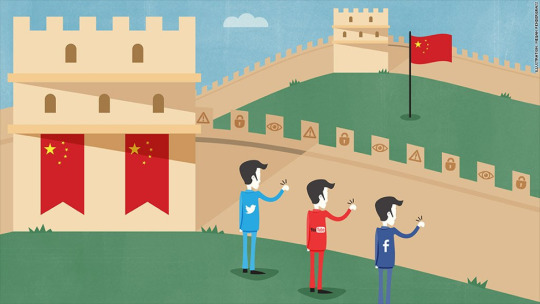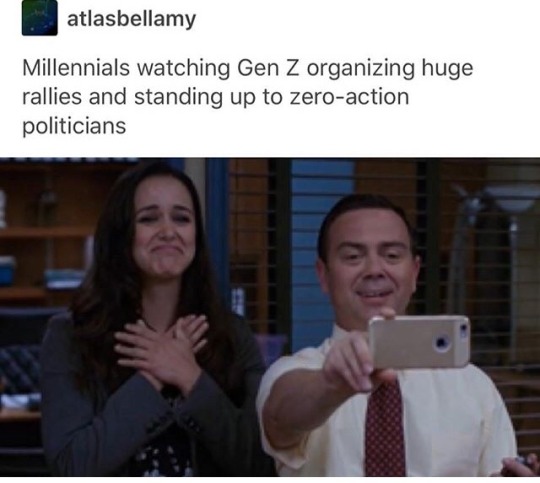Text
Adapt & Thrive - Growing Internet Usage in China [Week 11]
“So, if you are a fan of Game of Thrones, you definitely know how important a big wall is for an old kingdom. It prevents weird things from the north. Same was true for China. In the north, there was a great wall, Chang Cheng. It protected China from invaders for 2,000 years. But China also has a great firewall. That’s the biggest digital boundary in the whole world.” - Michael Anti at TEDGlobal 2012

In 2012, Michael Anti spoke at the TEDGlobal summit in Edinburgh and his talk on the internet in China has since been viewed over a million times. His talk provided a summary of Internet usage in China that challenged perceptions of China’s internet being a desolate wasteland due to government censorship and the infamous ‘Great Firewall of China’. Anti insisted that was not the case and he’s right. If anything, the restrictions in place have forced the Chinese people to get creative and adapt to the limitations of their internet servers.
Internet usage in China is becoming increasingly popular, as of January this year, China reportedly has 772 million users according to a report published by the China Internet Network Information Center (Borak, M 2018, p.1). Nation-wide penetration of the Internet in China is also on the rise, with rates reaching 55.8%, aided primarily through the increased usage of mobile phones. Despite the sheer abundance of active Internet users, the Chinese government are notoriously strict and crackdowns on popular websites, applications and games are common. As such, the Chinese people have developed numerous ways around the regulations and not just by getting a VPN. These methods can be categorised into one of two approaches, copying and encoding. Copying refers to Chinese IT developers copying popular websites and platforms such as Facebook, Twitter and Instagram that are banned in China and creating their own Chinese government-approved versions. The graphic below shows the numerous Chinese equivalents of the world’s most popular social media platforms. These Chinese sites are still subject to strict rules and regulations but there are of course, ways around that.

Encoding or ‘public code’ refers to a publically agreed upon code for certain banned or filtrated content. China’s internet surveillance algorithms pick up on certain trigger words that could indicate negativity towards the government or national values. Words such as the Chinese president’s name, key historical events such as the Tiananmen Square protests of 1989 or even logistical planning words such as ‘meet up’ or ‘get together’ are picked up by the security system and sent back to government facilities for further investigation or are filtered out altogether (Xiao, Q 2013, p.1). As such, the Chinese people learn to encode their discussions to avoid censorship. This usually involves substituting forbidden words with phrases or characters that won’t be picked up by the algorithm but will still make sense in context. For example, the date of the Tiananmen Square massacre is June 4th and cannot be searched for on Chinese Internet servers. So, people have begun to use the phrase ‘May 35th’ instead (NPR 2013, p.1) Replacement words may eventually get picked up on and subsequently banned, but by that point there would already be a new equivalent.

China is a fascinating case study for the monitoring of Internet usage. Although China is a country with one of the world’s most advanced Internet security systems, it also has some of the world’s most active Internet users. For example, in May this year a short-video smartphone application called ‘Douyin’ also known as ‘Tik Tok’ reached, “the top of the Apple App Store’s global non-game download chart for the first quarter of 2018”, within only 19 months of being released (Zuo, M 2018, p.1) Despite the enormous firewall the country’s internet resides in, China may just have one of the most active and influential digital communities in the world.
References
Anti, M 2012, Behind the Great Firewall of China, 30th July, viewed 24th May 2018, https://www.youtube.com/watch?v=yrcaHGqTqHk
Borak, M 2018, Chinese internet users grow to 772 million, TechNode, viewed 24th May 2018 https://technode.com/2018/01/31/chinese-internet-users-772-million/
Xiao, Q 2013, In China, Avoiding the ‘Great Firewall’ Internet Censors, NPR, viewed 24th May 2018,https://www.npr.org/templates/story/story.php?storyId=220106496
Zuo, M 2018, Video app Douyin brings Chinese out of their shells, beats YouTube, Facebook in download charts, South China Morning Post, viewed 24th May 2018, http://www.scmp.com/news/china/society/article/2146909/video-app-douyin-brings-chinese-out-their-shells-beats-youtube
2 notes
·
View notes
Link
An interesting idea. I personally only have Facebook, LinkedIn, Instagram and Snapchat but I barely use Snapchat. I guess if you are on most, if not all social media sites available it can feel like you are suffocating under the perceived pressure to use them all.
9 notes
·
View notes
Photo

Russia Quietly Tightens Reins on Web With ‘Bloggers Law’
477 notes
·
View notes
Quote
We are drowning in information, while starving for wisdom.
E.O. Wilson, Consilience: The Unity of Knowledge, 1998 (via humanoidhistory)
1K notes
·
View notes
Text
Who runs the Sims world? Girls. [Week 10]

At first glance, the gaming community may not appear to be the most friendly and inviting space for women. With events such as #gamergate, the general consensus appears to be female players are not welcome in gameplay or community interaction. Recent statistics show a different story; this year it was calculated that women accounted for approximately 45% of gamers in the US (Statistica 2018, p.1). However, the games played by women differ slightly to their male counterparts; in one survey of both male and female gamers, family/farm sim was one of the most popular choices for women, followed by casual puzzle and atmospheric exploration (Yee, N 2017, p.1). To examine these findings further, I will use the world’s most popular simulation game, The Sims, as a case study of gaming communities in which female players are the majority.
The Sims is a life simulation game first produced by Electronic Arts and Maxis. The first game was released in 2000, and has since undergone numerous reiterations, expansion packs and spin-offs. With approximately 200 million copies of the game sold worldwide, it’s one of the best selling PC games of all time. The Sims utilises the type of play coined by French critic Roger Caillois, known as mimicry. Mimicry refers to a simulation game in which players can escape reality and create their own. What makes the Sims interesting however, is not the game alone but the community that plays it.

There are two key groups within the Sims player community; creators and players. Creators design and build custom content for the Sims, known as mods or modifications, for players to download and use. Custom content or CC can range from aesthetic changes such as different hairstyles, makeup or clothes to actual gameplay modifications that can change the way Sims interact with the world around them.

Creators often have their own profiles on Sim modification websites or Tumblr blogs with their own fan bases. The other key group are the players, who record their Sims play experience and upload the edited footage online, usually to a YouTube channel. Popular videos in this genre are usually speed builds, birth-to-death stories and ‘let’s plays’. Both communities however, are predominantly female.

There are few verifiable statistics on the player demographics of the Sims, however in 2014, Electronic Arts, “estimated the series’ audience to be 65% female”(Sapieha, C 2014, p.1). A cursory glance at any custom content site reflects this; there is far more custom content available for female Sims then male. Additionally, women run most of the most popular Sims gaming YouTube channels. The Sims gaming community is unique in a sense, that women are the predominant users and the most active in producing bonus content, unlike most other gaming communities. Video game culture is known for its vilification against women, as #gamergate, so it’s heartening to see female players take control in the Sims, in more ways than one.
References
Statista 2018, Distribution of computer and video gamers in the United States from 2006 to 2018, by gender, Statista, viewed 17th May 2018, https://www.statista.com/statistics/232383/gender-split-of-us-computer-and-video-gamers/
Yee, N 2017, Beyond 50/50: Breaking Down the Percentage of Female Gamers by Genre, Quantic Foundry, viewed 17th May 2018, https://quanticfoundry.com/2017/01/19/female-gamers-by-genre/
Sapieha, C 2014, Electronic Arts’ The Sims 4 aims to prove there’s still a market for pricey, PC-based life simulators, Financial Post, http://business.financialpost.com/technology/gaming/electronic-arts-the-sims-4-aims-to-prove-theres-still-a-market-for-pricey-pc-based-life-simulators
0 notes
Text
Things Boys Have Said To Me In Online Games:
you shouldn’t be here, you’re a ‘chick’
girls can’t / don’t play computer games
I bet you’re rubbish, girls can’t game
‘do u hav a web cam’
I’ll go easy on you
you must be ugly to be a girl who games
fat bitch always online
if I let you win will you skype me
I don’t want the girl on my team
and of course finally:
don’t tell me what I can and can’t say stupid feminist princess don’t come online if you don’t want to be treated this way (legit)
Now I am always one of the first to believe ‘not all men do this, not all men do that’, but the amount of harassment I have received in the world of online gaming is just unreal. Girls should be able to game without being patronized. Girls should be able to game without sex coming into the conversation. Girls should be able to game and not be insulted. Girls should be able to play what they want and do what they want online and not have sexist, objectifying, rude comments hurled at them. It’s not hard to be respectful. Live and let live.
2K notes
·
View notes
Text
FitBits: When Wearable Tech Over Steps™ Ethical Boundaries [Week 9]
youtube
Here’s an unpopular opinion: FitBits suck. Let me elaborate; any corporate organisation that attempts to make a profit out of gullible people through misinformation about health and fitness sucks. Take most private gyms for example, that rely on inherent laziness and low-self esteem to sell countless un-used memberships and charge people ridiculous amounts for the resources to maintain a healthy, active lifestyle. Or athletic clothing companies, that imply through their advertising that in order to exercise you need ‘active-wear’ and that wearing a specific, expensive pair of shoes will improve your athletic ability. But the one thing about the fitness industry that bugs me the most are fitness trackers. Through marketing alone, companies have convinced everyday people they need to track and analyse their daily fitness levels with devices that should really only benefit professional athletes or those with chronic health issues. Guilt-tripping people into reaching their ‘step-count’ is not only a waste of time and money, it’s perpetuating the many misconceptions of health and fitness.
What is most concerning about fitness trackers currently is the data they generate and how it is used. Smart watches and fitness trackers collect and store the health information of their customers, whether the customers like it or not. The questionable ethics of this practise are only increased by the emergence of wearable tech such as FitBits being marketed to companies to monitor the health and fitness of their employees. Private companies tracking the health data of their customers sounds like the episode description from a new season of Black Mirror, but unfortunately, it’s not far off from the truth. The emergence of wearable health trackers in the last few years has the potential for huge impact for the health and fitness industry. When I say huge impact, I mean it’s going to make a lot of money. According to TechCrunch, the global wearable’s market this year is expected to generate a total of $30.5 billion in revenue (Lomas, N 2017, p.1).

Wearable tech aside, the concept of people other than medical professionals having access to the public’s health data is concerning. Whilst the popularity of tracking health data increases, “user privacy and ownership of user-generated data remains an under-explored territory from policy and regulatory perspectives while becoming a booming business for social media industry and MedTech manufactures”(Multiple Authors 2016, p.1). The primary issue with data tracking is that the technology and it’s potential are progressing too quickly for law regulation to catch up. Regulation dilemmas include private companies selling health data to third parties in order to tailor advertising, or insurance companies basing their claim approval process on the health data of their customers. FitBit now markets their products to companies, so that employers can track the health and movement of staff. A research paper in the Frontiers Health Research journal recommends, “healthcare policymakers at an international level need to develop a shared policy and regulatory framework supporting a balanced agenda that safeguards personal information, limits business exploitations, and gives out a clear message to the public while enabling the use of data for research and commercial use” (Multiple authors 2016, p.1).
At the end of the day, if you want to buy wearable tech such as a FitBit to monitor your everyday activity, that’s your choice as a consumer. But in making that choice, consider whether you’re complacent in the management of your health data. If you find you’re not comfortable with enormous corporations in control of your private data, maybe just write down much you exercised that day in a diary instead.
References
Lomas, N 2017, Global wearables market to grow 17% in 2017, 310m devices sold, $30.5BN in revenue:Gartner, viewed 6th May 2018, https://techcrunch.com/2017/08/24/global-wearables-market-to-grow-17-in-2017-310m-devices-sold-30-5bn-revenue-gartner/
FitBit|Health Solutions, Engage Employers For Real, viewed 6th May 2018, < https://healthsolutions.fitbit.com/>
0 notes









